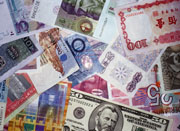Looking for more insights?
Sign up to stay informed about our latest article releases.
Foreign stocks are soaring and Americans are pouring money into them. But although overseas equities have captured investors' fancy before, there's a twist this time: More investors are embracing passive, index-style investing, ignoring the long-held belief that active managers can beat indexers by uncovering bargains in inefficient foreign markets. Have conditions really changed enough to make indexing pay off as well in foreign markets as it has in the U.S.? It may be too soon to know for sure. But international equity markets and American investor behavior are clearly evolving, according to Wharton finance professors.

Sign up to stay informed about our latest article releases.